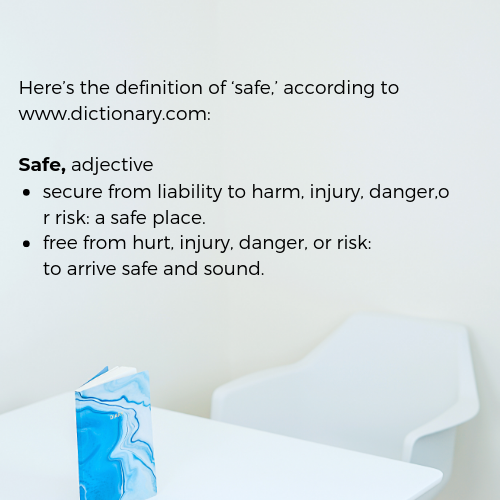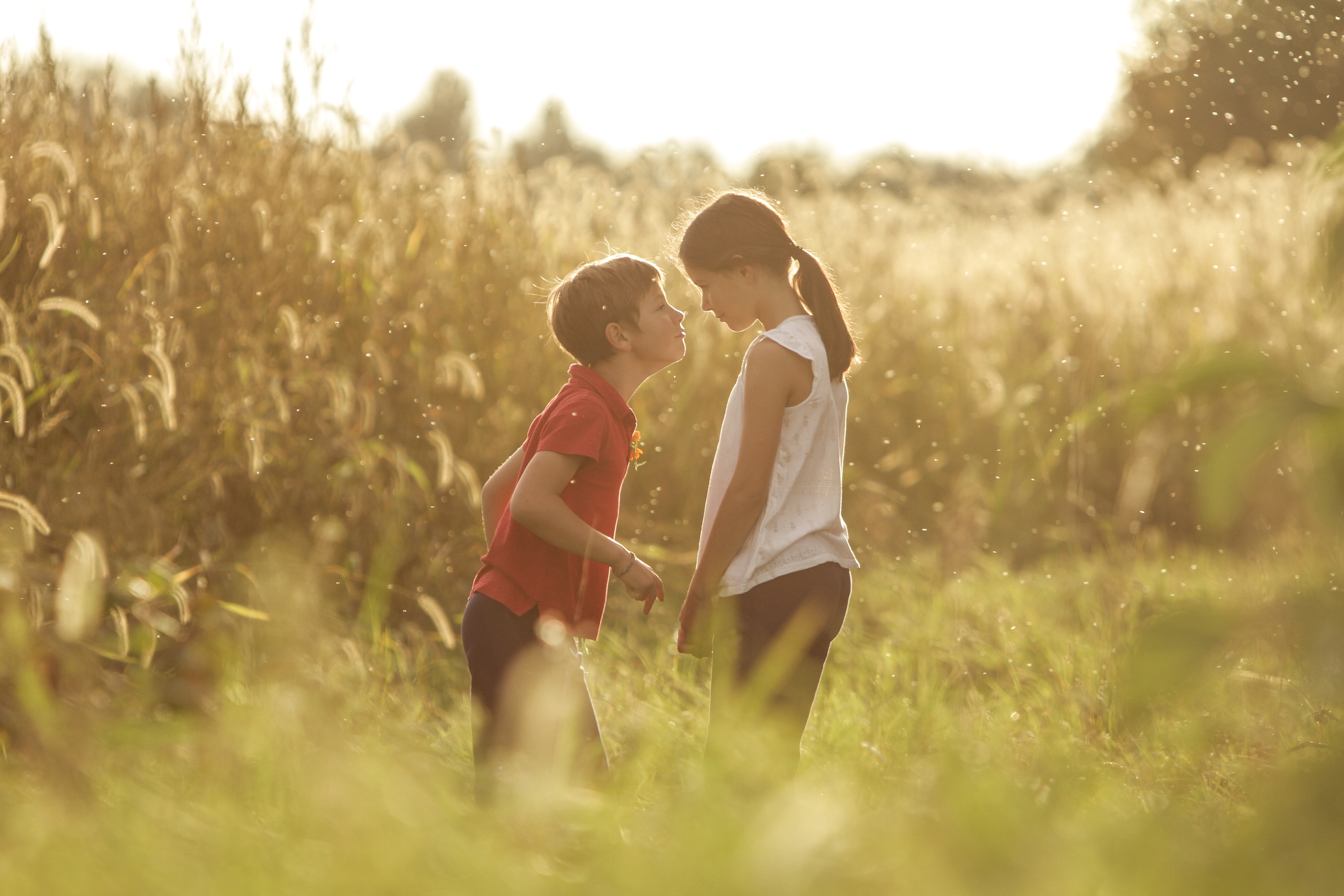Create a Safe Place
Back to school…it’s hard to believe we’re saying those words already – didn’t summer just start? As school supplies show up in the grocery stores aisles, it’s almost like New Years in some ways: for our kids, anyway, it’s a time for new goals, new schools for some, new friends, and new opportunities. As the proverbial ‘village,’ we can look at this time of year as an opportunity to set a new foot forward, too. Let THIS be the year that we have less stress about life with tweens and teens!
 In case you missed, last month’s article about the Foundations of C.O.N.N.E.C.T.I.O.N., here’s a quick recap:
In case you missed, last month’s article about the Foundations of C.O.N.N.E.C.T.I.O.N., here’s a quick recap:
Create a safe place
Observe
Nonjudgment
(Smile and) Nod
Explore
Challenge Your Truths
Take Time – and the Process Takes Time
Innovate
Own Your Own Story
Nurture
These certainly are not presented in any order other than the way the first letters spell out CONNECTION. Find one that resonates and dig in. Then jump to another one for a while and come back to the first one down the road.
 For now, let’s dive into the first one and talk about what a safe space looks like and how we can create one. In his ‘hierarchy of needs,’ American psychologist Abraham Maslow identified ‘safety’ as the second most important category of needs, coming right after physiological needs like food, water, shelter, and clothing.
For now, let’s dive into the first one and talk about what a safe space looks like and how we can create one. In his ‘hierarchy of needs,’ American psychologist Abraham Maslow identified ‘safety’ as the second most important category of needs, coming right after physiological needs like food, water, shelter, and clothing.
Most of us immediately think about physical safety. But when it comes to establishing a solid connection with others we’re usually speaking more about emotional security, which is one component Maslow clearly defines within his overarching concept of safety.
Stop for a minute and think about why you haven’t shared something important with someone. What were you afraid of? Being laughed at or judged? Being embarrassed? Humiliated? Being told you were dumb for worrying about something? Afraid of getting trouble? Losing a job? Losing social status? Afraid of being seen as less than? Or afraid of disappointing someone else if they knew the ‘truth’?
 Guess what? Our teens are afraid of the same thing – both in terms of how their peers see them and how the adults in their lives see them.
Guess what? Our teens are afraid of the same thing – both in terms of how their peers see them and how the adults in their lives see them.
Here are some things I’ve heard/experienced. Any sound familiar?
- ‘You’re not wearing that, are you? You look like a clown. Haha.’
- ‘You don’t know what real problems are. Wait ‘til you’re an adult and you have real problems to deal with.’
- ‘If you do such and such, you’ll lose the car.’
- ‘It’s just a crush – you don’t know what real love is yet.’
- ‘You better never let me find out that you said/did…..’
- ‘I don’t care what your grades are, I just want you to do your best. But, don’t forget, I know what your best is.’
- ‘Why can’t you be more like so and so?’
Which ones did you hear growing up? Which ones still hurt?
If we want to create a safe space for our kids to open up, we need to remember these fears. Then, we can create an environment that minimizes those fears.
 Start by opening your awareness to situations in which you or those around you laugh at others’ experiences or misfortunes. If kids see the adults in their lives laughing at others, those will not be the adults the kids go to with important stuff. Even if the adults around condone kids laughing at others, that’s pretty telling.
Start by opening your awareness to situations in which you or those around you laugh at others’ experiences or misfortunes. If kids see the adults in their lives laughing at others, those will not be the adults the kids go to with important stuff. Even if the adults around condone kids laughing at others, that’s pretty telling.
Validate their feelings. Yeah, I know – it might really be ‘just’ a crush, from our perspective. But man, it’s POWERFUL! And it’s a huge learning experience for them! Crushes are how we first learn how to deal with broken hearts because we inevitably have a crush who doesn’t reciprocate our feelings! Instead, validate their feelings as much as you can by saying things like, ‘Yea, I know this really hurts,’ or, ‘Wow, that must not feel very good.’ The more you validate their feelings, the more they will feel they can trust you. Are you going to stay friends with someone who says, ‘Man, you’re being completely irrational – suck it up and deal with it.’ (Okay, yes, sometimes we do need a friend who will say that. But usually, we just need someone to give us a verbal hug!)
Don’t compare – especially to siblings. That’s the kiss of death to connection. Think about if your partner said to you, ‘Why can’t you be more like so-and-so’s wife/husband/partner?’ You’re going to feel pretty rotten. And let’s be real, you’re not so-and-so’s wife/husband/partner, so how could you possibly be more like them? That feeling of being seen as ‘less than’ SUCKS – especially by a parent. I can’t tell you how many students I’ve coached over the years who tell me they feel like they live in their older (and sometimes even younger!) sibling’s shadow. Their parents point it out, their teachers point it out, and sometimes the siblings even point it out. The one in the shadow grows up knowing exactly where they stand in the family hierarchy, and it’s not at the top, that’s for sure.
 Loss of autonomy/privileges vs. discipline/boundaries. Without question, humans need boundaries. Let’s talk about the whole idea of consent – clearly, we need boundaries, and we need to be able to express them clearly! And, loss of autonomy/privileges (think car keys) is a powerful tool to encourage kids to toe the line. But, we also need to weigh the balance between getting kids to behave the way we want them to and keeping the lines of communication open. One of the most common examples I’ve seen over the years has been kids who were at a party and had a drink and then got behind the wheel because they were afraid to call their parents and admit they’d been drinking. What’s more important? A teen calling us and asking for help, even if they’ve behaved in a way we don’t like or having them alive? How do we present that line to our teens so that they don’t necessarily totally avoid a loss of privileges, but they also trust us to call us when they’ve done something we don’t like?
Loss of autonomy/privileges vs. discipline/boundaries. Without question, humans need boundaries. Let’s talk about the whole idea of consent – clearly, we need boundaries, and we need to be able to express them clearly! And, loss of autonomy/privileges (think car keys) is a powerful tool to encourage kids to toe the line. But, we also need to weigh the balance between getting kids to behave the way we want them to and keeping the lines of communication open. One of the most common examples I’ve seen over the years has been kids who were at a party and had a drink and then got behind the wheel because they were afraid to call their parents and admit they’d been drinking. What’s more important? A teen calling us and asking for help, even if they’ve behaved in a way we don’t like or having them alive? How do we present that line to our teens so that they don’t necessarily totally avoid a loss of privileges, but they also trust us to call us when they’ve done something we don’t like?
Here are some ideas that some families have shared that can take steps toward establishing a safe space.
- Set a clear day/time when kids can share anything without fear of getting in (or in as much) trouble.
- It may be on the drive to school: ‘During these 20 minutes, you can share anything you want and you will not be punished.’
- Or it can be over dinner: ‘During dinner, you can share anything about your day, and if it includes a mistake that you made, you’ll get in less trouble if I hear it from you than if I hear it from someone else.’
- Establish a particular manner of communicating, rather than a day/time or face-to-face.
- Maybe you start a parent/teen journal, and you each take turns writing in it and giving it to the other: ‘anything you tell me through the journal will stay safe with me unless I think someone’s life is in danger.’
- Or maybe you create a ‘safe word’ the teen can use: say they’re at a party and there’s activity going on they don’t like…they can text the family something simple, like ‘X’, and the person who is geographically closest (use your phone plan’s tracking app for this) will respond with something like ‘Hey, John, there’s been a family emergency. We need to pick you immediately.’ Then, they go get John, no questions asked. It gives John an easy out with his friends (they don’t need to know he actually asked for help) and he knows he won’t get in trouble because he made the safe decision.
What other ideas have you incorporated to create a safe place for your kids? I’d love to hear from you!
[email protected] * www.facebook.com/groups/parentweenconnection






